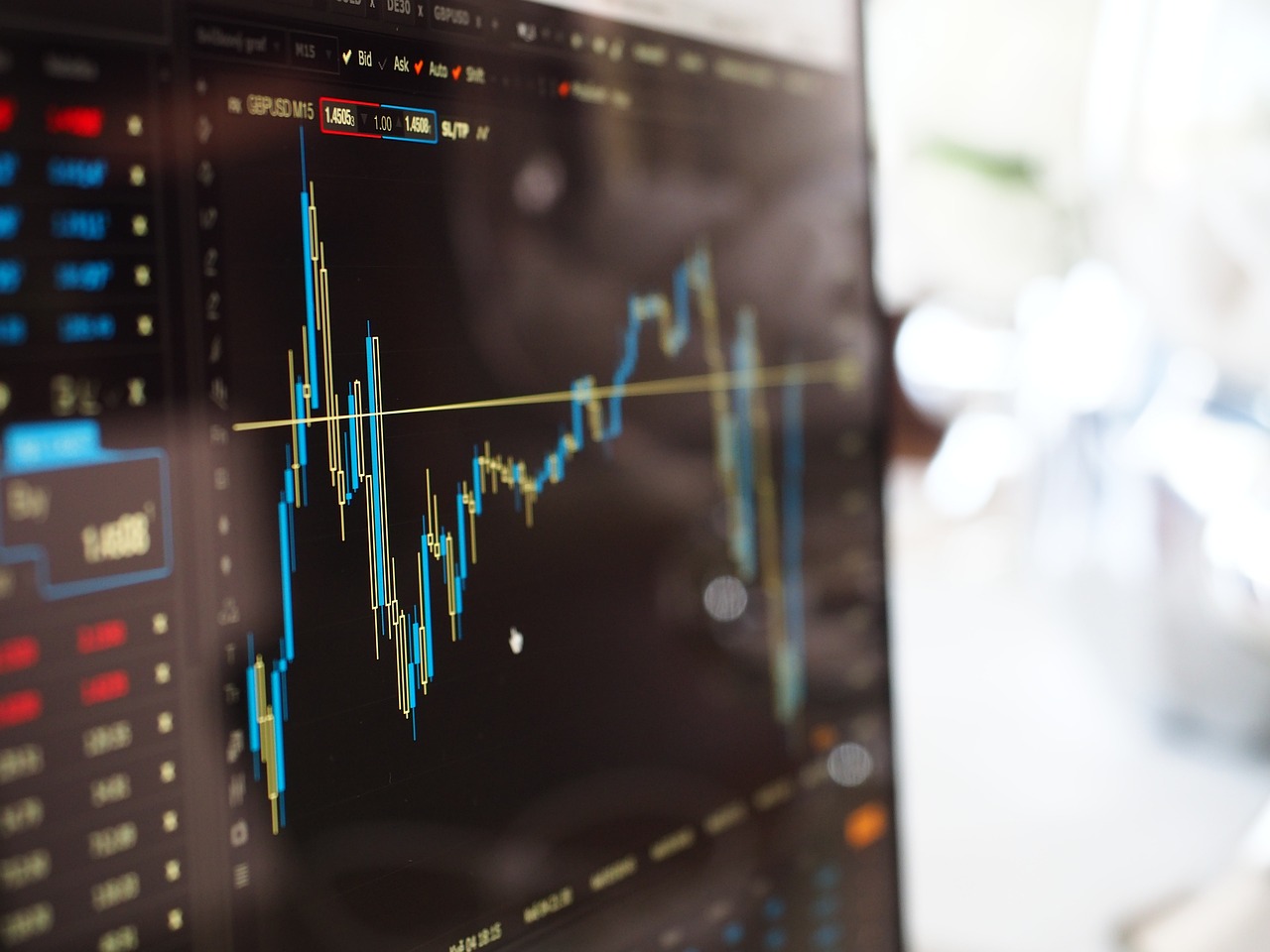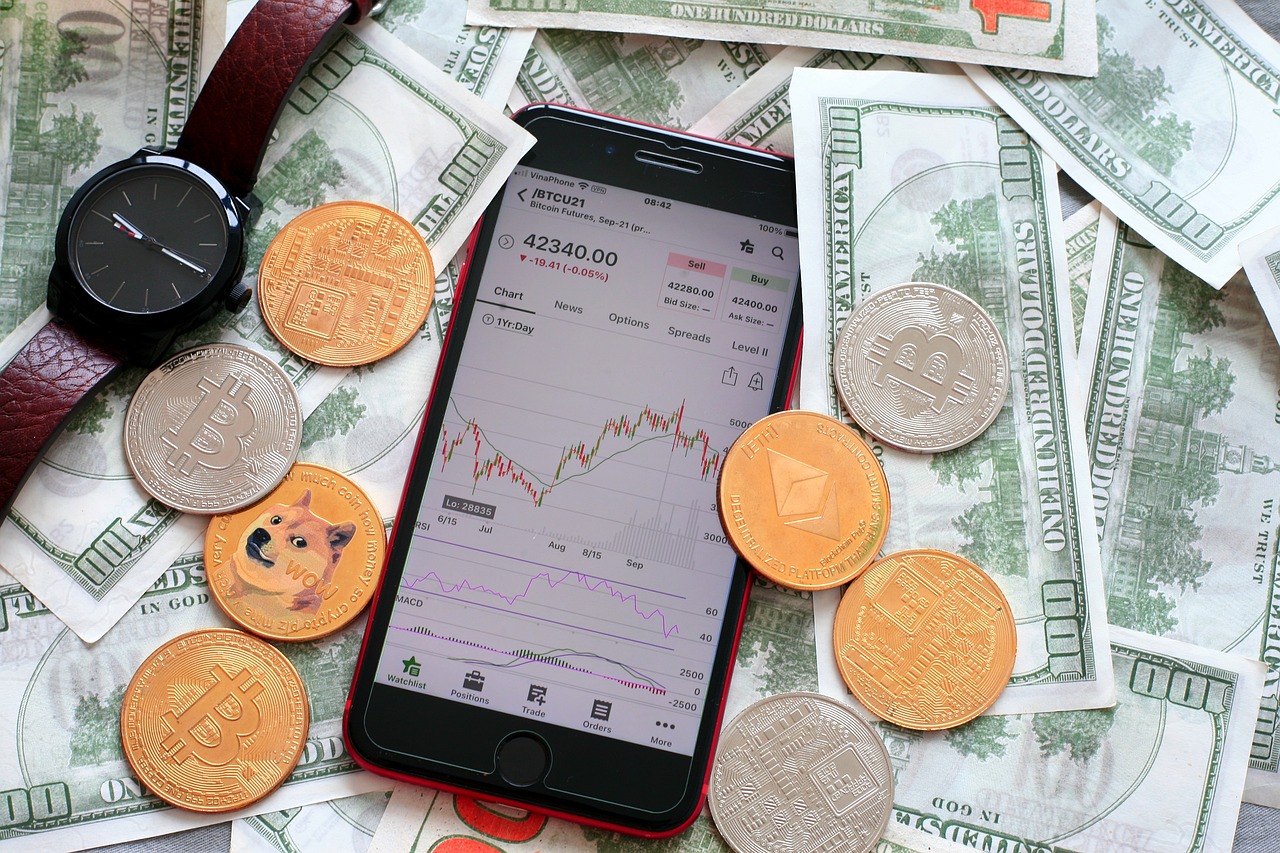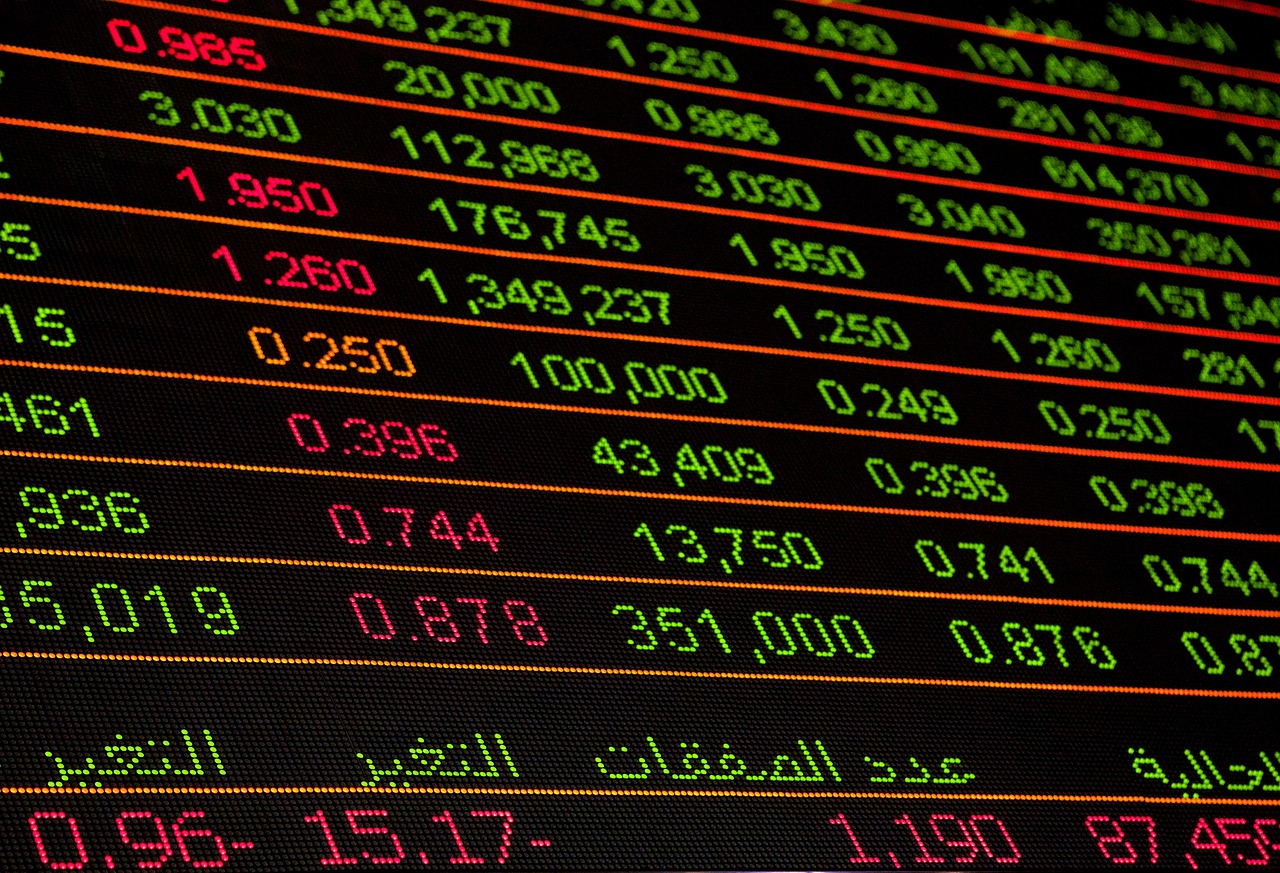How to Avoid Common Pitfalls in Crypto Trading
Welcome to the wild and exhilarating world of cryptocurrency trading! If you’re here, you’re probably looking to make a mark in this fast-paced arena. But let’s be real—while the potential for profit can be as thrilling as a roller coaster ride, the risks can also leave your stomach in knots. To navigate this landscape successfully, it’s crucial to understand the common pitfalls that many traders fall into. This guide will arm you with essential strategies to identify and dodge these frequent mistakes, paving the way for a more successful trading experience.
Market volatility is like the heartbeat of cryptocurrency; it’s what makes this space so dynamic and, at times, chaotic. Prices can skyrocket one moment and plummet the next, leaving many traders feeling like they’re on a never-ending emotional roller coaster. But what causes this volatility? Factors like regulatory news, market sentiment, and technological developments can all trigger sudden price swings. As a trader, being prepared for these fluctuations is key. For instance, having a clear understanding of market trends and conducting thorough research can equip you with the insights needed to make informed decisions. Remember, it’s not just about riding the waves; it’s about learning to swim in turbulent waters.
Let’s face it—trading can stir up a whirlwind of emotions. Fear of missing out (FOMO) can push you to make hasty decisions, while greed might lead you to hold onto a position longer than you should. This emotional turmoil can cloud your judgment and lead to costly mistakes. So, how can you maintain a rational mindset amidst the chaos? One effective strategy is to recognize your emotional triggers. Are you prone to panic selling when prices drop? Or do you find yourself overinvesting when you see others making profits? Identifying these triggers is the first step towards managing them effectively.
Understanding your emotional landscape is crucial for successful trading. Common triggers can include sudden market drops, news headlines, or even social media buzz. By pinpointing what sets off your emotional reactions, you can develop strategies to mitigate their impact. For example, you might decide to limit your exposure to social media during trading hours or set specific criteria for making trades rather than relying on gut feelings. This proactive approach can help you stay grounded and focused on your long-term goals.
One of the most effective ways to combat emotional decision-making is by having a well-structured trading plan. Think of it as your roadmap through the unpredictable terrain of crypto trading. A solid trading plan should include key components such as your investment goals, risk tolerance, and specific entry and exit strategies. By adhering to this plan, you can reduce the likelihood of making impulsive decisions driven by fear or greed. Remember, a good plan is not just about profits; it’s also about protecting your investments and ensuring you stay on course even when emotions run high.
Incorporating mindfulness into your trading routine can significantly enhance your focus and reduce impulsivity. Techniques such as meditation, deep breathing exercises, or even taking short breaks can help clear your mind and refocus your thoughts. Imagine being a surfer, patiently waiting for the perfect wave instead of frantically paddling in every direction. By practicing mindfulness, you can cultivate a sense of calm that allows you to make more rational decisions, even in the face of market turbulence.
When it comes to trading, setting realistic expectations is vital for long-term success. Many traders dive in with dreams of instant riches, only to find themselves disheartened when reality doesn’t match their lofty ambitions. Instead of aiming for the moon, consider setting achievable goals that are aligned with your risk tolerance and trading style. This approach not only helps in maintaining motivation but also influences your trading behavior positively. Remember, it’s a marathon, not a sprint!
Effective risk management is the backbone of successful crypto trading. Without it, even the most promising trades can lead to significant losses. So, what are some strategies to protect your investments? First and foremost, diversification is key. By spreading your investments across different cryptocurrencies, you can reduce your exposure to any single asset’s volatility. This way, if one coin takes a nosedive, your overall portfolio can remain relatively stable.
Diversification is like having a balanced diet; it ensures that you’re not putting all your eggs in one basket. By investing in a mix of established cryptocurrencies like Bitcoin and Ethereum, alongside promising altcoins, you can create a well-rounded portfolio. This strategy not only mitigates risk but also opens up opportunities for growth across various sectors of the crypto market.
Another practical tool for managing risk is the use of stop-loss orders. Think of stop-loss orders as your safety net; they automatically sell your assets when they reach a certain price, helping to safeguard against significant losses. Implementing these orders effectively can be a game-changer, allowing you to maintain control over your trades even when the market takes an unexpected turn. Just remember to set your stop-loss levels wisely, considering market volatility and your personal risk tolerance.
- What is the most common mistake in crypto trading? Many traders fall victim to emotional decision-making, often driven by fear and greed.
- How can I manage risk in crypto trading? Strategies like diversification and using stop-loss orders are effective ways to manage risk.
- Is it necessary to have a trading plan? Absolutely! A trading plan helps guide your decisions and keep emotions in check.
- What role does market volatility play in trading? Market volatility can lead to rapid price changes, making it essential for traders to stay informed and prepared.

Understanding Market Volatility
Market volatility is one of the most striking features of the cryptocurrency landscape. It’s like a rollercoaster ride—thrilling, unpredictable, and sometimes a little scary. The price of cryptocurrencies can swing dramatically in a matter of hours, influenced by various factors that can leave even seasoned traders feeling a bit dizzy. Understanding the causes of this volatility is crucial for anyone looking to navigate the crypto waters successfully.
So, what exactly drives this wild price action? Several elements contribute to the rollercoaster of crypto prices:
- Market Sentiment: The emotional state of investors can lead to rapid price changes. Positive news can create a buying frenzy, while negative news can trigger panic selling.
- Regulatory News: Announcements regarding regulations can have a significant impact on prices. For instance, news of a government crackdown can lead to sudden drops.
- Technological Developments: Innovations or issues within the blockchain technology can influence prices. A major upgrade might boost confidence, while a security breach can scare investors away.
- Market Manipulation: The relatively low market capitalization of many cryptocurrencies makes them susceptible to manipulation by large holders or "whales." This can lead to sudden price spikes or drops.
To prepare for these sudden price swings, traders must adopt a proactive mindset. Here are a few strategies to help you minimize losses during volatile periods:
- Stay Informed: Regularly follow crypto news and market analysis to understand the factors influencing market movements.
- Use Technical Analysis: Familiarize yourself with chart patterns and indicators that can signal potential price movements.
- Set Alerts: Utilize trading platforms that allow you to set price alerts, so you can react quickly to market changes.
By understanding market volatility and its causes, you can better prepare yourself for the unpredictable nature of cryptocurrency trading. Remember, it’s not just about riding the waves; it’s about knowing when to hold on tight and when to let go.

Emotional Decision-Making
When it comes to crypto trading, emotions can be both a friend and a foe. The thrill of watching prices soar can ignite a sense of euphoria, while a sudden dip can plunge you into despair. It’s like riding a roller coaster—one moment you’re at the peak, and the next, you’re plummeting down. This emotional volatility can cloud your judgment and lead to impulsive decisions that might not align with your trading strategy. So, how do you keep your head when everything around you is spinning? Understanding the impact of emotions, particularly fear and greed, is crucial for any trader aiming for success.
Fear often rears its ugly head during market downturns. You might find yourself panicking, thinking that you need to sell off your assets before they lose even more value. This reaction, while instinctive, can lead to losses that could have been avoided if you had simply held on a little longer. On the flip side, greed can be just as destructive. The allure of quick profits can push you to make rash decisions, like investing more than you can afford to lose in a hot trend without doing your due diligence. In essence, letting emotions dictate your trading strategy is like playing with fire—you’re bound to get burned!
To effectively manage your emotions, you first need to identify your personal emotional triggers. These triggers are unique to each trader and can stem from various sources, such as past trading experiences, financial pressures, or even external factors like news headlines. For instance, if you’ve experienced significant losses in the past, you might become overly cautious, leading to missed opportunities. Conversely, if you’ve had a string of successful trades, you might feel invincible, prompting you to take unnecessary risks. Recognizing these patterns is the first step towards emotional mastery.
Here are some common emotional triggers that traders face:
- Market News: Sudden news can evoke fear or excitement, leading to hasty decisions.
- Peer Influence: Watching others make profits can trigger envy and impulsive trading.
- Financial Stress: Worrying about bills can lead to desperate trading strategies.
A well-structured trading plan is your best defense against emotional decision-making. Think of it as your roadmap; without it, you’re likely to get lost in the chaos of the market. Your trading plan should outline your goals, risk tolerance, and specific strategies for entering and exiting trades. By adhering to this plan, you can minimize the influence of emotions on your trading decisions. For instance, if your plan dictates that you will only invest a certain percentage of your portfolio in any single trade, you’ll be less likely to succumb to the temptation of going all-in during a market hype.
Mindfulness techniques can be incredibly beneficial for traders looking to enhance their emotional control. By incorporating practices such as meditation, deep breathing, or even simple reflection periods before making a trade, you can cultivate a sense of calm and clarity. These techniques help to ground you, allowing you to approach trading with a rational mindset rather than being swept away by emotional currents. For example, taking a few moments to breathe deeply and assess your feelings before executing a trade can help you avoid impulsive actions that you might regret later.
Ultimately, emotional decision-making is a double-edged sword in the world of crypto trading. By recognizing your emotional triggers, developing a solid trading plan, and practicing mindfulness, you can navigate the turbulent waters of trading with greater confidence and resilience. Remember, in the realm of cryptocurrency, it’s not just about making profits; it’s about making informed decisions that align with your overall trading strategy.
Q: How can I manage my emotions while trading?
A: Consider developing a trading plan and practicing mindfulness techniques to help you stay focused and rational.
Q: What are some common emotional triggers in trading?
A: Common triggers include market news, peer influence, and financial stress, which can lead to impulsive decisions.
Q: Why is a trading plan important?
A: A trading plan provides structure and helps you make informed decisions, reducing the likelihood of emotional trading.

Recognizing Emotional Triggers
When it comes to crypto trading, emotions can be both a friend and a foe. Recognizing your emotional triggers is the first step toward mastering your trading strategy. Think of emotional triggers as the red flags that signal you're about to make a decision based on feelings rather than logic. For instance, have you ever felt that rush of excitement when a coin's price skyrockets? Or perhaps the gut-wrenching fear when it suddenly plummets? These emotions can lead you to make impulsive decisions that could cost you dearly.
Many traders experience similar emotional responses, which can include:
- Fear of Missing Out (FOMO): This is that nagging feeling that if you don’t act quickly, you’ll miss out on potential profits. It often leads to hasty decisions.
- Fear of Losing: This can paralyze you, making you hesitate to sell or cut losses, hoping the market will turn around.
- Overconfidence: After a few successful trades, you might feel invincible, leading to reckless decisions.
Recognizing these triggers is crucial because it allows you to create a buffer between emotion and action. For instance, if you find yourself feeling overly excited about a particular trade, take a step back. Ask yourself: Is this excitement based on sound analysis or just a fleeting emotion? This self-reflection can help you maintain a more rational approach.
Additionally, keeping a trading journal can be a game-changer. Documenting your trades along with your emotional state at the time can provide invaluable insights. Over time, you’ll begin to see patterns that reveal your emotional triggers. For example, you might notice that you often make poor decisions after a long losing streak or when you’ve had a particularly stressful day. By identifying these patterns, you can develop strategies to cope with them better.
In summary, recognizing emotional triggers is not just about being aware; it's about taking actionable steps to manage them. By understanding what drives your emotions, you can create a more disciplined trading environment that prioritizes logic over impulse. Remember, in the world of crypto trading, knowledge isn't just power; it's the key to unlocking a more successful and less stressful trading experience.
- What are emotional triggers in trading? Emotional triggers in trading are feelings or situations that lead to impulsive decisions, often based on fear, greed, or excitement.
- How can I manage my emotional triggers? You can manage emotional triggers by keeping a trading journal, practicing mindfulness, and developing a structured trading plan.
- Why is it important to recognize emotional triggers? Recognizing emotional triggers helps you make more rational trading decisions, reducing the risk of losses due to impulsive actions.

Developing a Trading Plan
Creating a solid trading plan is akin to drafting a map for a long journey; it provides direction and helps you navigate through the unpredictable twists and turns of the cryptocurrency market. A well-structured trading plan is not just a list of rules; it's a comprehensive strategy that outlines your goals, risk tolerance, and the specific steps you’ll take to achieve success. Think of it as your personal GPS in the vast and often chaotic world of crypto trading.
At its core, a trading plan should encompass several key components. First and foremost, you need to define your trading goals. Are you looking to make a quick profit, or are you in it for the long haul? Setting clear, measurable objectives will help you stay focused and make informed decisions. For instance, you might aim for a specific percentage gain over a month or a target price for a particular cryptocurrency.
Next, you should assess your risk tolerance. This involves understanding how much you are willing to lose on a trade before it starts to impact your overall financial health. A common rule of thumb is to never risk more than 1-2% of your total trading capital on a single trade. This way, even if a few trades go south, you still have enough capital to continue trading without significant setbacks.
Another crucial aspect of your trading plan is to establish your entry and exit strategies. This means determining the conditions under which you will buy or sell a cryptocurrency. For example, you might decide to enter a trade when a cryptocurrency hits a certain price point or when a specific technical indicator signals a buying opportunity. Similarly, you should outline your exit strategy—whether it’s taking profits at a predetermined level or cutting losses if the market moves against you.
Additionally, it’s vital to incorporate emotional management techniques into your trading plan. Trading can stir up a whirlwind of emotions, from excitement to fear. By anticipating these feelings and having strategies in place to deal with them, you can maintain a level head. For instance, you might decide to take a break from trading if you find yourself feeling overly anxious or if you’ve experienced a string of losses.
Finally, your trading plan should include a section for review and adjustment. The crypto market is constantly evolving, and so should your strategies. Regularly reviewing your trades—what worked and what didn’t—can provide valuable insights that help refine your approach. Consider keeping a trading journal where you document your trades, the rationale behind them, and the outcomes. This practice not only helps you learn from past experiences but also keeps you accountable to your trading plan.
In summary, developing a trading plan is a foundational step that can significantly enhance your trading performance. By setting clear goals, assessing your risk tolerance, defining your entry and exit strategies, managing your emotions, and regularly reviewing your approach, you can navigate the complexities of crypto trading with greater confidence and clarity. Remember, a well-thought-out plan is your best ally in the unpredictable world of cryptocurrency.
- What is a trading plan? A trading plan is a comprehensive strategy that outlines your trading goals, risk tolerance, entry and exit strategies, and emotional management techniques.
- Why is it important to have a trading plan? A trading plan helps you make informed decisions, manage risks, and maintain discipline in the often volatile cryptocurrency market.
- How often should I review my trading plan? It's advisable to review your trading plan regularly, especially after significant trades or market changes, to ensure it remains relevant and effective.

Practicing Mindfulness Techniques
In the fast-paced world of cryptocurrency trading, where price swings can happen in the blink of an eye, can be a game-changer. Imagine your mind as a calm lake, undisturbed by the chaotic winds of market fluctuations. By incorporating mindfulness into your trading routine, you can enhance your focus, reduce impulsive decisions, and ultimately make more informed choices. But how do you cultivate this state of mind amidst the noise of trading? Let's dive into some practical techniques.
One effective way to practice mindfulness is through breathing exercises. Taking a few moments to focus on your breath can ground you, especially during stressful trading sessions. For instance, try the 4-7-8 technique: inhale for four seconds, hold your breath for seven seconds, and exhale for eight seconds. This simple exercise can help you regain control and clarity, making it easier to approach your trades with a calm demeanor.
Another powerful mindfulness technique is meditation. Even just a few minutes of meditation daily can significantly improve your mental resilience. Picture this: you sit down, close your eyes, and allow your thoughts to drift by like clouds in the sky. This practice not only reduces stress but also enhances your ability to stay focused on your trading strategy rather than getting swept away by emotions like fear or greed.
In addition to breathing exercises and meditation, consider keeping a trading journal. Reflecting on your trades and the emotions you experienced during each decision can provide valuable insights. Write down your thoughts before and after trades, and identify patterns in your emotional responses. This practice not only promotes self-awareness but also helps you recognize triggers that may lead to impulsive actions in the future.
Lastly, integrating mindfulness into your daily routine can be incredibly beneficial. Whether it’s taking a mindful walk, enjoying a cup of tea without distractions, or simply being present in the moment, these practices can enhance your overall well-being and mental clarity. By consciously dedicating time to mindfulness, you can create a buffer against the emotional turbulence of trading.
In conclusion, practicing mindfulness techniques is about creating a space for yourself to breathe and reflect, allowing you to approach trading with a clear mind. By incorporating these strategies into your routine, you can navigate the complexities of crypto trading with greater ease and confidence. Remember, a calm trader is often a successful trader!
- What are mindfulness techniques? Mindfulness techniques are practices that help individuals focus on the present moment, reducing stress and improving mental clarity.
- How can mindfulness benefit traders? Mindfulness can help traders manage emotions, make rational decisions, and maintain focus, leading to more successful trading outcomes.
- Do I need to meditate daily to see benefits? While daily meditation can enhance mindfulness, even short, occasional practices can provide significant benefits.
- Can mindfulness reduce trading anxiety? Yes, mindfulness practices can help reduce anxiety by promoting relaxation and encouraging a more balanced perspective on trading challenges.

Setting Realistic Expectations
When diving into the world of cryptocurrency trading, one of the most important things to keep in mind is the necessity of . The crypto market is notorious for its wild price swings and unpredictable behavior, which can easily lead traders to develop unrealistic hopes or fears. Imagine standing on the edge of a roller coaster, knowing that the ride is going to be thrilling yet terrifying. That’s the essence of crypto trading! If you expect a smooth journey, you might find yourself unprepared for the ups and downs.
Many newcomers to crypto trading come in with the idea that they will make a fortune overnight. While it’s true that some traders have experienced meteoric rises in their investments, these stories often overshadow the countless others who have faced significant losses. It’s crucial to understand that the crypto market operates in cycles, much like the seasons. There will be times of growth, followed by periods of decline. By acknowledging this reality, you can better prepare yourself for the inevitable fluctuations.
Setting achievable goals can greatly influence your trading behavior. For instance, instead of aiming for a 100% return in a week, consider setting a goal of a 10-15% return over a few months. This approach not only reduces the pressure but also allows you to take a more measured approach to trading. Here are some important factors to consider when setting your expectations:
- Market Research: The more you understand the market, the better your expectations will be. Stay informed about trends, news, and potential market changes.
- Time Commitment: Recognize how much time you can realistically dedicate to trading. More time can lead to better decision-making.
- Risk Tolerance: Understand your personal risk tolerance. Are you comfortable with high-risk trades, or do you prefer a more conservative approach?
By incorporating these elements into your trading strategy, you can create a balanced approach that aligns with your personal circumstances. The importance of emotional resilience cannot be overstated either. When your expectations are grounded in reality, you're less likely to panic during downturns or become overly euphoric during upswings. This emotional stability will serve you well as you navigate the choppy waters of cryptocurrency trading.
In conclusion, setting realistic expectations is not just about avoiding disappointment; it's about crafting a sustainable trading strategy that promotes long-term success. By staying grounded and focused on achievable goals, you position yourself to handle the market's inherent volatility with grace and confidence. Remember, in the world of crypto, patience and perseverance are your best friends!
Here are some common questions traders ask about setting realistic expectations in crypto trading:
- What is a realistic return on investment in crypto trading? While returns can vary, aiming for a 10-15% return over several months is often more realistic than seeking quick gains.
- How can I manage my emotions while trading? Developing a solid trading plan and practicing mindfulness techniques can help you maintain emotional control.
- Is it normal to experience losses in crypto trading? Yes, losses are a part of trading. Setting realistic expectations helps you prepare for these inevitable downturns.

Risk Management Strategies
In the world of cryptocurrency trading, where prices can swing wildly in the blink of an eye, having effective is not just advisable—it's essential. Imagine walking a tightrope without a safety net; that’s what trading without a solid plan feels like. So, how can traders protect their investments while still aiming for substantial returns? Let’s dive into some key strategies that can help you navigate the turbulent waters of crypto trading.
First and foremost, diversification is a cornerstone of risk management. By spreading your investments across various cryptocurrencies, you can reduce the impact of a poor-performing asset on your overall portfolio. Think of it as not putting all your eggs in one basket. In the volatile crypto market, one coin can drop significantly while another soars. A diversified portfolio allows you to balance out those fluctuations. For example, if you invest in Bitcoin, Ethereum, and a handful of altcoins, a downturn in Bitcoin might be mitigated by the performance of Ethereum or an altcoin. Here’s a simple table to illustrate how diversification can work:
| Cryptocurrency | Investment Amount | Potential Risk |
|---|---|---|
| Bitcoin | $1,000 | High |
| Ethereum | $500 | Medium |
| Altcoin A | $300 | Medium |
| Altcoin B | $200 | Low |
Another critical strategy is the use of stop-loss orders. These are like your safety harness on that tightrope. A stop-loss order automatically sells your asset when it reaches a certain price, protecting you from larger losses. For instance, if you buy a cryptocurrency at $100 and set a stop-loss at $90, your investment will be sold if the price drops to that level, limiting your loss to just $10. It’s a simple yet powerful tool that can save you from emotional decision-making during market downturns.
But risk management isn't just about tools and strategies; it's also about mindset. Traders need to cultivate a disciplined approach to their investments. This means sticking to your trading plan and not letting emotions drive your decisions. When the market is volatile, it’s easy to panic and sell at the wrong time or get greedy and hold on for too long. Maintaining a level head is crucial for effective risk management.
Moreover, setting realistic expectations is vital. Many new traders enter the market with dreams of quick riches, but this mindset can lead to reckless trading and significant losses. Instead, focus on achievable goals and understand that the market is unpredictable. By setting realistic targets, you can create a more sustainable trading strategy that prioritizes long-term growth over short-term gains.
Finally, remember to regularly review and adjust your risk management strategies. The crypto market is ever-evolving, and what works today might not work tomorrow. Stay informed about market trends and be willing to adapt your approach as necessary. This proactive mindset can help you stay ahead of potential risks and capitalize on new opportunities.
- What is the best way to manage risk in crypto trading? Diversification, stop-loss orders, and maintaining a disciplined mindset are key strategies.
- How often should I review my trading strategy? Regularly, especially after significant market movements or changes in your investment goals.
- Can I completely eliminate risk in crypto trading? No, but you can significantly reduce it with effective risk management strategies.

Diversifying Your Portfolio
Diversifying your portfolio is one of the most effective strategies you can employ in cryptocurrency trading. Imagine you're at a buffet with a vast array of delicious dishes. If you only fill your plate with one item, you might miss out on the incredible flavors that the other dishes offer. The same principle applies to investing. By spreading your investments across a variety of cryptocurrencies, you not only enhance your chances of capitalizing on market opportunities but also cushion yourself against potential losses.
Why is diversification so crucial in the volatile world of crypto? Well, the cryptocurrency market is notorious for its unpredictability. Prices can skyrocket one day and plummet the next. By diversifying, you reduce the risk of a single asset's poor performance dragging down your entire portfolio. For instance, if you invest solely in Bitcoin and it experiences a significant downturn, your overall investment could suffer greatly. However, if you also hold Ethereum, Cardano, and a few altcoins, the impact of Bitcoin's decline might be mitigated by the performance of your other assets.
When considering how to diversify, think about the different sectors within the crypto space. Here are some categories you might explore:
- Established Cryptocurrencies: These include Bitcoin and Ethereum, known for their stability relative to other coins.
- Emerging Projects: Newer cryptocurrencies with innovative technologies that might offer high growth potential.
- Stablecoins: Coins like USDT or USDC that are pegged to fiat currencies, providing a safe haven during market volatility.
Additionally, it's essential to keep an eye on the market trends and news that could affect your investments. For instance, regulatory changes or technological advancements can significantly impact the value of certain cryptocurrencies. By diversifying, you position yourself to take advantage of these shifts while minimizing the risk associated with any single asset.
To illustrate the importance of diversification, consider the following table that compares two hypothetical portfolios:
| Portfolio A | Portfolio B |
|---|---|
| 100% Bitcoin | 40% Bitcoin, 30% Ethereum, 20% Cardano, 10% Stablecoins |
| Risk Level: High | Risk Level: Moderate |
| Potential for High Returns | Balanced Potential for Returns |
| Vulnerable to Market Drops | More Resilient to Market Fluctuations |
As you can see, Portfolio A is highly susceptible to market downturns, while Portfolio B offers a more balanced approach, reducing risk while still allowing for growth. In essence, diversification is not just a safety net; it's a strategy that can lead to more sustainable long-term success in the unpredictable world of cryptocurrency trading.
In conclusion, the art of diversification goes beyond merely holding multiple cryptocurrencies. It involves understanding the market, staying informed about trends, and making calculated decisions based on your risk tolerance and investment goals. So, as you navigate the thrilling yet turbulent waters of crypto trading, remember that a well-diversified portfolio can be your best ally.
- What is the best way to diversify my crypto portfolio?
Consider investing in a mix of established cryptocurrencies, emerging projects, and stablecoins to balance risk and reward. - How often should I rebalance my portfolio?
It's advisable to review and rebalance your portfolio at least quarterly or whenever significant market changes occur. - Can diversification guarantee profits?
No investment strategy can guarantee profits, but diversification can help manage risk and reduce potential losses.

Using Stop-Loss Orders
When it comes to crypto trading, one of the most effective tools at your disposal is the stop-loss order. Think of it as your safety net, a way to protect your investments from the unpredictable nature of the market. Imagine you're walking a tightrope; a stop-loss order is like having a harness that catches you if you start to fall. It sets a predetermined price at which your cryptocurrency will automatically be sold, preventing further losses beyond a certain point.
The beauty of stop-loss orders lies in their ability to take the emotion out of trading. In the heat of the moment, when prices are plummeting and panic sets in, it can be challenging to make rational decisions. However, by implementing a stop-loss order, you’re essentially giving yourself a pre-set exit strategy. This can be a game changer when the market does what it does best—surprise you!
To effectively utilize stop-loss orders, consider the following strategies:
- Set realistic stop-loss levels: Avoid placing your stop-loss too close to the current price. If you set it too tight, you might get stopped out during normal market fluctuations.
- Use trailing stop-loss orders: This innovative approach allows your stop-loss order to move with the market. If the price increases, your stop-loss rises as well, locking in profits while still protecting against downturns.
- Reassess regularly: As the market evolves, so should your stop-loss strategies. Regularly review your positions and adjust your stop-loss orders as necessary.
Now, you might be wondering, how do you actually set a stop-loss order? It’s quite straightforward. Most trading platforms allow you to specify the stop-loss price when placing your order. For example, if you buy Bitcoin at $50,000 and want to limit your losses to 10%, you would set a stop-loss at $45,000. If the price hits that mark, your order is executed, and your Bitcoin is sold, preventing further losses.
However, it's crucial to remember that while stop-loss orders can significantly reduce your risk, they are not foolproof. In highly volatile markets, prices can sometimes 'gap' down, meaning they can skip over your stop-loss price. This is why it's essential to use stop-loss orders in conjunction with other risk management strategies, such as portfolio diversification and staying informed about market trends.
In summary, using stop-loss orders is a fundamental aspect of successful crypto trading. They can help you maintain emotional control, protect your investments, and allow you to trade with a clearer mind. So, the next time you enter a trade, consider implementing a stop-loss order. It’s like having a trusty safety net that lets you focus on the thrill of trading without the fear of falling too far.
Q: What is a stop-loss order?
A: A stop-loss order is a type of order that automatically sells your cryptocurrency when it reaches a specific price, helping to limit potential losses.
Q: How do I set a stop-loss order?
A: You can set a stop-loss order through your trading platform by specifying the price at which you want to sell your asset if it starts to decline.
Q: Can stop-loss orders guarantee I won't lose money?
A: While stop-loss orders help mitigate losses, they cannot guarantee profits or prevent losses in highly volatile markets where prices may gap down.
Q: Should I use fixed or trailing stop-loss orders?
A: It depends on your trading strategy. Fixed stop-loss orders are simpler, while trailing stop-loss orders can help lock in profits as the market moves in your favor.
Frequently Asked Questions
- What is market volatility in cryptocurrency trading?
Market volatility refers to the rapid and significant price fluctuations that can occur in the cryptocurrency market. These swings can be caused by various factors, including market sentiment, regulatory news, and technological developments. Understanding this volatility is crucial for traders to prepare for potential losses and maximize gains.
- How can I avoid emotional decision-making while trading?
To avoid emotional decision-making, it's essential to develop a structured trading plan that outlines your goals, strategies, and risk tolerance. Additionally, practicing mindfulness techniques can help you maintain focus and reduce impulsive reactions driven by fear or greed. Recognizing your emotional triggers is also vital in managing your responses during trading.
- What should I include in my trading plan?
A solid trading plan should include specific goals, entry and exit strategies, risk management rules, and a clear assessment of your emotional triggers. By having a well-defined plan, you can navigate the complexities of trading more effectively and make informed decisions rather than emotional ones.
- Why is setting realistic expectations important in crypto trading?
Setting realistic expectations is crucial because it helps you stay grounded and focused on long-term success. Unrealistic goals can lead to disappointment and impulsive decisions, which may result in significant losses. By understanding the market's nature and setting achievable targets, you can maintain a healthier trading mindset.
- What are some effective risk management strategies?
Effective risk management strategies include diversifying your portfolio across different cryptocurrencies, using stop-loss orders to limit potential losses, and only investing what you can afford to lose. These strategies can help protect your investments and minimize the impact of market fluctuations.
- How does diversification help reduce risk?
Diversification helps reduce risk by spreading your investments across various cryptocurrencies rather than concentrating them in one. This way, if one asset underperforms, the others may still provide a buffer, ultimately leading to a more stable overall portfolio performance.
- What are stop-loss orders, and how do I use them?
Stop-loss orders are automated instructions to sell a cryptocurrency when it reaches a specific price, helping to limit potential losses. To use them effectively, determine a price point that reflects your risk tolerance and set the stop-loss order accordingly. This strategy can help you manage your investments without having to monitor the market constantly.



















